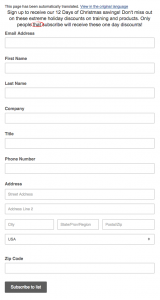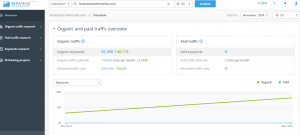
Online businesses migrating from on-premise or custom ecommerce solutions to SaaS platforms are saving hundreds of thousands of dollars on go-to-market and maintenance costs. These savings are then reinvested in attracting net new customers, building strong loyalty and customer lifetime value, and ultimately creating a brand that resonates with your target audience and outcompetes competitors still spending on old technology.
Beyond cost savings, SaaS platforms also provide one key feature absolutely necessary to success in today’s commerce environment: agility. Below, I outline the common ecommerce pain points experienced by brands powered by on-premise solutions that are ripe for a SaaS migration. These include difficulties within the financial, technical and marketing realms of your currently existing business.
Read through, and if any of them apply to you, it’s likely you’re ready for a SaaS solution.
Solving for Ecommerce Pain Points
Ideally, a replatforming project is something you’ve been planning for a year or more in advance. Your allotted budget, as well as clear goals for replatforming, should already be established. Of course, in reality, replatforming isn’t something companies proactively plan. Most often, there’s some driving issue — or a number of them — forcing a company to migrate.
There are many reasons that prompt a replatforming. Here are three major ones.
Financial
- The client can’t afford to continue doing business with their existing ecommerce platform due to the high maintenance costs.
- Mergers & acquisition activity often creates an opportunity for companies to consolidate their operations and gain the efficiencies of moving to a new combined ecommerce platform.
- New initiatives such as launching new brands or product lines, or entering new markets. With new initiatives, many brands will test more cost-effective solutions in order to first prove the concept. Often, the more cost-effective platforms outperform the legacy platform the main brand is using, and thus prompting a complete migration.
Technical
- The old platform has grown unstable under peak traffic conditions, resulting in slow site performance and bad customer experience.
- The catalogue database can’t handle the physical number of SKUs you’ve added to the catalogue over the years.
- The platform only captures a limited number of attributes, can only associate a limited number of product related assets or, as in some cases I’ve seen, can’t handle certain types of content such as video.
- It takes too long to develop new features on the old platform and the backlog of projects in IT becomes unmanageable or cost prohibitive.
Marketing
- Marketing teams are at the tip of the spear in ecommerce businesses and so they are usually the ones pushing for replatforming. Marketing is tasked with not only reaching potential customers and driving traffic to the site, but also converting at the highest rate possible.
- Old ecommerce platforms can prevent marketing from converting visitors that otherwise might have converted on a newer, more featured platform. Worse still, a company’s old platform may prevent them from competing in key areas entirely. Some of the key features and capabilities that marketing are looking for include:
- Improved Site Search: Including both directed and faceted search capabilities. Marketing wants to be able to control search results for the best possible user experience.
- Personalization: Dynamic content presentation and optimization based on multiple visitor personas.
- Mobile Commerce: Specific design and funnel for mobile devices in the wake of mobile-first customer expectations.
- Social Media: Hooks for marketing on the top social sites, easy shareability and social commerce capabilities.
- Tag Management: Re-tagging the site for efficient digital marketing, increased search functionality and better SEO based on Google’s indexing of the site map.
- Personalization: Dynamic content presentation and optimization based on multiple visitor personas.
Any one of these requirements could be justification enough for a new platform. Most companies looking to migrate, however, have multiple of these issues.
Take mobile commerce, for example. Mobile revenue has jumped dramatically with the combination of social media platforms and powerful mobile devices, over 50% for some retailers. Not having a site that supports mobile visitors cuts out a large selling opportunity, not to mention the SEO hit you take from Google’s newest search algorithms, which reward mobile readiness and penalize sites that don’t support mobile. Not having this one feature, which can take months of coding for an on-premise or custom solution, is reason enough to switch — not to mention the financials of having to pay for such coding work.
In all, it’s simple: when implemented properly, the benefits of a modern ecommerce platform can bring significant revenue upside and reduced operating costs. If any of the above issues are currently plaguing your team and business as a whole, then it may be time to look into a new solution to increase efficiency and ROI.
Digital & Social Articles on Business 2 Community(107)
Report Post








